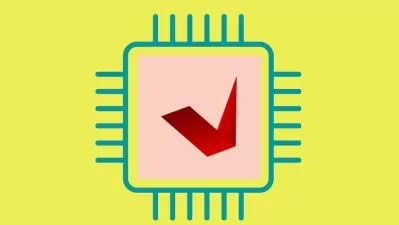Digital Logic Circuits and Design
Sujithkumar MA
9:05:17
Description
Learn how to design a digital circuit in the simplest way in the world of digital electronics
What You'll Learn?
- Digital Electronics
- Digital Circuit Design
- Digital Logic Design
Who is this for?
More details
DescriptionAfter completing this course, you'll be able to
1. Understand all the fundamentals of number systems and performing conversion between them.
2. Function of logic circuits and how to design them.
3. Classify Combinational Logic and Sequential Logic.
4. How to design a combinational logic circuit for a given scenario with the minimum number of gates possible.
5. Use all the standard techniques to minimize the logic gate requirements
6. Design sequential logic circuits like Counters and Shift Registers using Flip flops.
7. Understand the working of various flip flops and latches and highlight the difference between them.
If you're an aspirant who belong to the field of Computer Science, Electronics and Information Technology, Then this course will strongly build the foundations of the digital electronics in you.
Objective of the course is to make everyone design a digital circuit efficiently using various components.
Digital systems contain information that is represented as binary digits called bits.
The alphabet of these bits is the set {0, 1}, which represents the logical value of the
bits. The physical value is determined by the logic family being used. The transistor-transistor
logic (TTL) family represents a logic 0 typically as + 0.2 volts and a logic 1
typically as + 3.4 volts using a + 5 volt power supply; the emitter-coupled logic (ECL)
100K family represents a logic 0 typically as – 1.7 volts and a logic 1 typically as –0.95
volts using a – 4.5 volt power supply.
Thus, a signal can be asserted either positive (plus) or negative (minus), depending
upon the active condition of the signal at that point. The word positive, as used
here, does not necessarily mean a positive voltage level, but merely the more positive
of two voltage levels, as is the case for ECL.
Who this course is for:
- Beginner Electronics, CS and IT Aspirants
After completing this course, you'll be able to
1. Understand all the fundamentals of number systems and performing conversion between them.
2. Function of logic circuits and how to design them.
3. Classify Combinational Logic and Sequential Logic.
4. How to design a combinational logic circuit for a given scenario with the minimum number of gates possible.
5. Use all the standard techniques to minimize the logic gate requirements
6. Design sequential logic circuits like Counters and Shift Registers using Flip flops.
7. Understand the working of various flip flops and latches and highlight the difference between them.
If you're an aspirant who belong to the field of Computer Science, Electronics and Information Technology, Then this course will strongly build the foundations of the digital electronics in you.
Objective of the course is to make everyone design a digital circuit efficiently using various components.
Digital systems contain information that is represented as binary digits called bits.
The alphabet of these bits is the set {0, 1}, which represents the logical value of the
bits. The physical value is determined by the logic family being used. The transistor-transistor
logic (TTL) family represents a logic 0 typically as + 0.2 volts and a logic 1
typically as + 3.4 volts using a + 5 volt power supply; the emitter-coupled logic (ECL)
100K family represents a logic 0 typically as – 1.7 volts and a logic 1 typically as –0.95
volts using a – 4.5 volt power supply.
Thus, a signal can be asserted either positive (plus) or negative (minus), depending
upon the active condition of the signal at that point. The word positive, as used
here, does not necessarily mean a positive voltage level, but merely the more positive
of two voltage levels, as is the case for ECL.
Who this course is for:
- Beginner Electronics, CS and IT Aspirants
User Reviews
Rating
Sujithkumar MA
Instructor's Courses
Udemy
View courses Udemy- language english
- Training sessions 63
- duration 9:05:17
- Release Date 2023/02/13










